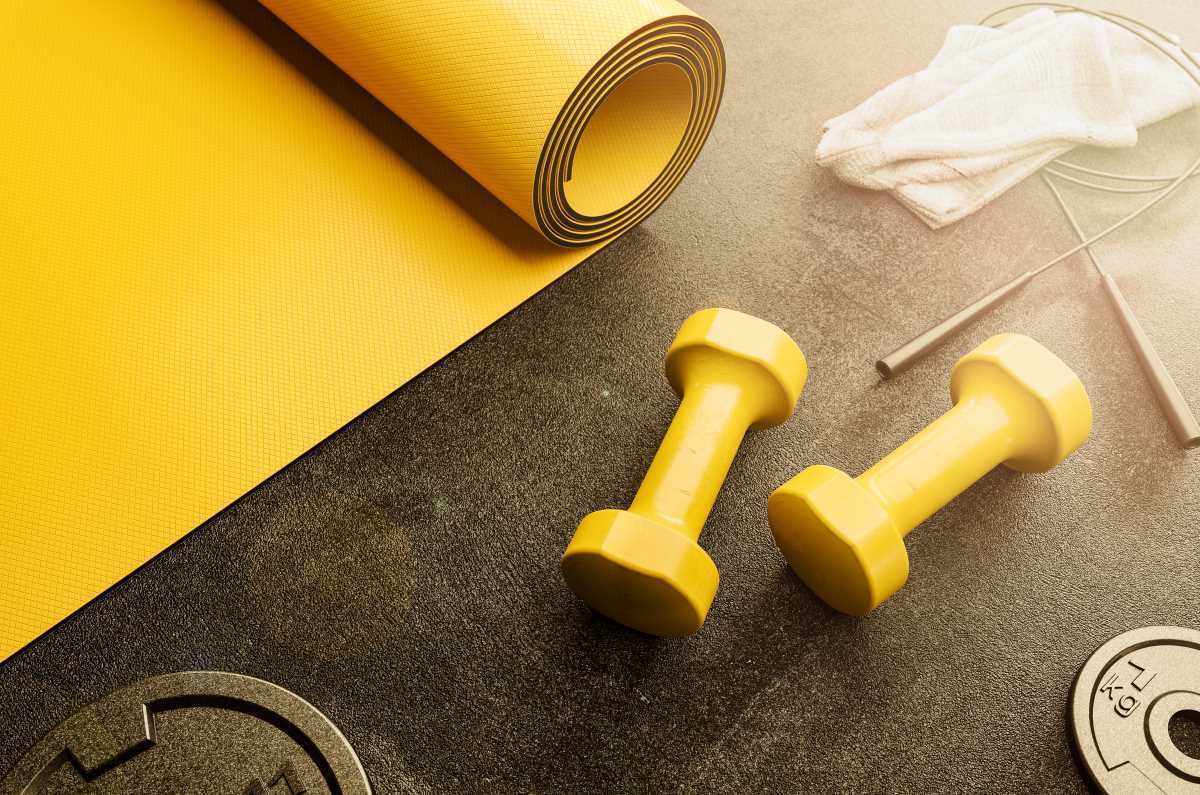NB: This article refers to unpaid or informal carers – people who provide care to those who need it within an existing relationship, such as a family member, a friend or a neighbour (1) – and not professional carers.
DYK, there are almost 2.7 MILLION carers in Australia?(2) That’s about 1 in 10 Australians 😮.
Carers are incredibly diverse. They come from all backgrounds, lifestyles, genders and ages.
You’re a carer if you care for a family member or friend with a physical or mental health condition, disability, or is frail due to old age.(3) You may share the caring role with others or do it alone. And the time spent caring for someone could be from a few hours a week to caring for them 24/7. You may be a carer for a short period while someone is recovering from an illness, injury or surgery or for a more extended or indefinite period.
Being a carer can be very fulfilling and bring you closer to the person you’re caring for. But at times, it can also be demanding and stressful. Here are some practical tips to help you look after yourself and the person you care for.
R.E.S.P.E.C.T – Find out what it means to me
It can be difficult for any of us to accept that we need help. That our body or health has let us down, and we can’t manage on our own as we once could. This loss of independence can make us feel vulnerable, afraid, or angry.
When you become a carer for someone, it’s essential that you ask about their needs and how they want to be treated. This gives them control over their life and choices. It also maintains their dignity.
Respect goes both ways. Just as you must respect the person you care for and their choices, preferences and boundaries, they need to respect yours.
Discuss boundaries. Doing this from the outset with clear, open communication is essential. What are the needs of the person you’re caring for? What do they want your help with? And what don’t they want help with? What are you comfortable or able to do? Over time, you may need to revisit this as circumstances and needs change.
Understand personal choices. It’s sometimes hard for carers to understand why the person they care for may not follow suggestions made to them by health professionals, such as taking medicines as prescribed, exercising, or quitting smoking. Try to encourage – but not push or nag – the person you care for. But if you’re concerned their behaviour is adversely affecting their health, discuss it with them. Is there something that’s putting them off? Do they need more information so they can make an informed choice? Are they worried, scared, or unsure about the pros and cons of a treatment? Having a respectful conversation about these feelings is important. And you may need input from the relevant health professional to move forward.
Have fun together. Don’t let your relationship be consumed by the caring role. Have a cup of tea, discuss things you enjoy, go for a walk, visit parks/galleries/cafes, or share a hobby. Doing things together that don’t relate to health issues will give you both balance and quality of life. ☕
Care for yourself
You can’t pour from an empty cup – so take care of yourself first. Caring is rewarding but also tiring, stressful, and often lonely. You need to take care of your own physical and mental health so that (a) you don’t fall in a heap and (b) you can continue to be a carer. If you’re running on empty, you can’t give your best as a carer, daughter, husband, sister, friend, mum etc. Ensure you get enough quality sleep, eat well, exercise regularly, relax and take breaks, meet up with friends, and accept your feelings. I know, that’s a lot. 😴 Especially if you’re also working and have a family and other commitments. But you need to make your health a priority.
Look after your mental health. As a carer, you may experience a range of emotions that can be difficult to deal with. Be aware of and acknowledge these feelings. If you need help, discuss your situation with your GP, a psychologist, or the Carer Gateway phone counselling or online carer forum.
Get support. It’s hard for most people to ask for help, but you don’t have to do things alone. Whether it’s having someone to talk to about your stress or anxiety, help around the house, or respite care, options are available. Talk with your GP, contact Carer Gateway, or talk with a friend or family member. You might also consider joining a peer support group or seeing a mental health professional.
Attending health appointments
When caring for someone, you may need to attend some or all of their health appointments. Before attending any, you should discuss your role at these appointments with the person you’re caring for. For example, are they happy for you to discuss their health and ask questions, or would they prefer you provide silent support?
It’s a good idea to write a list of questions you’d both like to ask before you go. And, if there’s a lot, consider booking a longer appointment so you have the time to get through them.
Attending appointments also ensures you know of any changes to their health condition/s and treatments.
Managing medicines
Find out about the medicines the person you’re caring for is taking – the type, dose, and any possible side effects.
It’s easy to forget to take medicines regularly, especially if there’s more than one and they’re taken at different times of the day. Talk to your pharmacist about using a pill dispenser if this is a problem. They contain individually sealed compartments to help make taking medicine easier. You can buy a pill dispenser and do it yourself, or your pharmacist can do it for you.
You can also arrange with the pharmacist to do a Home Medicines Review. This review ensures the medicines are safe, effective, and taken correctly.
Making things easier
Access services. Many services are available to help make things easier for you and the person you’re caring for. The Commonwealth Home Support Program provides a variety of services, including delivered meals, respite care, domestic assistance, community transport and much more. Contact My Aged Care or your local council for more information.
Carer Gateway also provides info about accessing services to make life easier in and around the home.
Pace yourself. Caring can take a toll on you physically and mentally. So pace yourself, and don’t try to do everything at once. For example, stagger the cleaning over several days instead of cleaning the whole house at once. Or cook meals in larger batches to freeze the leftovers for those days when you don’t feel up to cooking, or you’ve run out of time. By pacing yourself, you’ll have more energy and feel less frazzled – which is good for you and the person you care for.
Investigate aids, gadgets and home modifications. There’s a huge range of aids and equipment available to help you manage. They can help reduce stress on muscles and joints, save energy, prevent fatigue, and make life easier – with everything from personal safety, bathing, writing, dressing, bedding, mobility, seating, and lifting.
Simple things like long-handled shoehorns can allow the person you care for to put on their own shoes. Items such as grab rails in the bathroom can make bathing easier and safer. To find out more, speak with an occupational therapist.
Sharing the care
Caring, while fulfilling, can sometimes be challenging work. It’s essential that there are others who can share the work to make it easier for the primary carer. This help could be in the form of cleaning, shopping, or being available for you to talk to. 🧡
As a carer, you need to know your limits and boundaries. For example, if you can’t lift the person you care for, seek alternative devices or assistance to make things easier. Occupational therapists can assess the home and suggest modifications, aids and equipment.
Carer payments
You may be eligible to receive government benefits to help you provide care. There are different payments depending on your circumstances and those of the person you care for. Visit the Services Australia website for more info.
Planning ahead
It‘s essential to think about Powers of Attorney and Guardianship if the person you care for can no longer make their decisions known. Planning ahead ensures that their wishes are met and they can make necessary plans.
Contact our free national Help Line
Call our nurses if you have questions about managing your pain, musculoskeletal condition, treatment options, mental health issues, telehealth, or accessing services. They’re available weekdays between 9am-5pm on 1800 263 265; email (helpline@msk.org.au) or via Messenger.
More to explore
- Carer Gateway
- Carers Australia
- Caring for someone
Services Australia - Emotional support services for carers
Better Health Channel - How can I help someone with arthritis?
Versus Arthritis - Lifeline
Call 13 11 14 for 24-hour crisis support, information and referral - My Aged Care
- Occupational Therapy Australia
- Supporting carers
Department of Social Services
References
(1) Australian Government. Australian Institute of Health and Welfare. Informal carers. 2021.
(2) Australian Bureau of Statistics. 2018. Disability, ageing and carers, Australia: Summary of findings.
(3) Australian Government. Department of Social Services. Supporting carers.






 .
.












